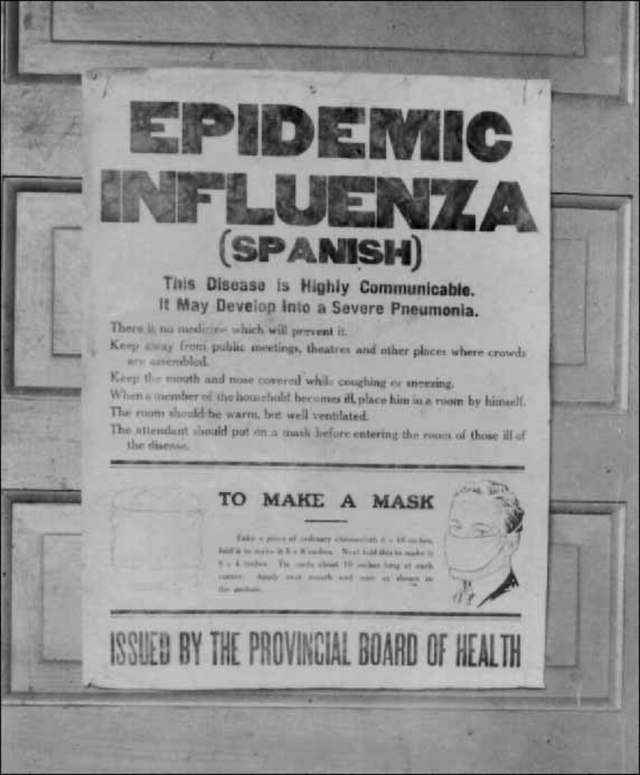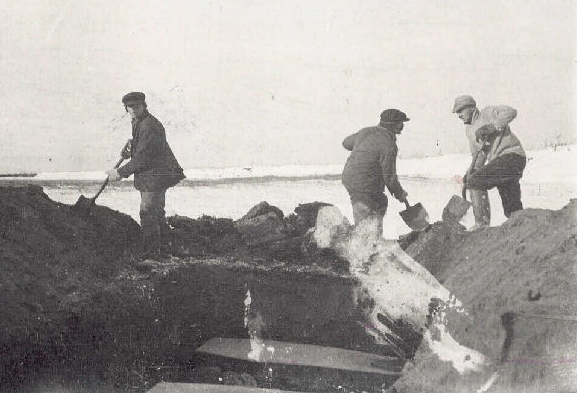
In 1920, the world was calculating the damages from the so-called “Spanish Flu,” a deadly two-year pandemic which infected nearly a third of the global population and killed somewhere in the region of 25-50 million people, with some estimates going as high as 100 million.
Though the situation in 2023 is much different, governments and scholars around the globe are still seeking to understand as much as they can about the spread and effects of the COVID-19 pandemic.
There’s one thing both pandemics have in common, though, and that is the fact that very little research has been done on the effects of the pandemics on Indigenous communities.
UTSC Anthropologist Lianne Tripp and collaborator Dr. SE Mamelund (University of Oslo and Akershus University College of Applied Sciences) have received funding from the Social Sciences and Humanities Research Council (Insight development) for a two-year project to examine the effect of the 1918 pandemic on First Nations in Canada, and the interaction of influenza with other conditions such as tuberculosis.
Professor Tripp is also a research fellow at the Centre of Advance Study two-year funded project Social Science Meets Biology: Indigenous People and Severe Influenza Outcomes, based in Oslo, Norway, along with a team of international scholars.
“We're writing multiple papers on diverse indigenous populations in Alaska, Labrador, New Zealand and the Sami in Scandinavia,” says Prof. Tripp. “We’re focused on 1918, but we're also looking at COVID as well.”
“There are a lot of parallels that you can make between the two,” she adds. “There are many differences as well.” For instance, while the COVID-19 pandemic was especially hard on the elderly and immunocompromised, the 1918 flu was noteworthy for affecting young adults, a demographic that had already suffered huge losses in the First World War.
Prof. Tripp is working with archival documents from both federal and provincial governments. “What I'm finding right now is that the newspapers are very helpful, and in British Columbia I've actually found a lot of interesting information pertaining to Indigenous communities that were reported there. So sometimes we have a count of the number of people infected, or the number of people who have died from specific Indigenous communities, or accounts on individuals who have died, which is often details that are not available in official government records. It makes the information more personal, but it also helps with figuring out how many people were sick in a community during this time period.”
Studying records for the 1918 pandemic comes with its own set of difficulties. Names of Indigenous communities were often not standardized across reports from different government organizations. In addition, the prevalence of other illnesses such as tuberculosis often made identifying the cause of death in victims difficult, especially given that such diseases could often interact with the flu to cause a far more severe infection. One of Dr. Tripp’s primary research goals is to examine whether the interaction of these two diseases led to elevated ‘influenza’ deaths in Indigenous communities and among young adults.
Despite its name, the first cases of the Spanish Flu were recorded in an army camp in Kansas, which later spread into Europe with GIs fighting on the Western Front. During the war, most countries had strict press censorship in place, so it was only from newspapers in neutral Spain that news of the pandemic began to filter out.

Prof. Tripp hopes the project will also help to enlighten the situation regarding COVID. “There hasn’t been that much scholarly research on Indigenous populations and COVID-19 in the Canadian context, much of what has been written is problematic because of the lack of understanding how the data was collected.”
Prof. Tripp discovered that prior research on COVID-19 in Indigenous populations erroneously reported that morbidity and mortality “seem to be higher in non-Indigenous populations, which was counter to what was being reported in the media in Canada, where throughout the pandemic we were seeing on the news that on some reservations there were very high rates of disease.” She published in the journal BMJ Global health that part of this flawed conclusion was attributed to the fact that the authors did not take into account that COVID-19 data for Indigenous populations was reported for those residing on reservations only. Prof. Tripp believes the pandemic influenza research will show that in 1918, infection and morbidity rates among Indigenous Canadians followed a similar pattern.
The SSHRC awarded $60,000 for an Insight Development grant to the project A Syndemic Potential: 1918 Influenza and Tuberculosis in First Nations Populations in Canada.